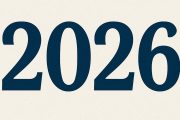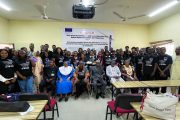The Nigerian Union of Teachers, (NUT) along with two other bodies, have drawn attention to the dangers of opening schools on January 18th, 2021 unless the rising cases of Covid-19 infection is contained. If, for any reasons, schools do not re-open in January, it would mean the loss of an entire academic year for majority of undergraduates and counterparts down the level. With the hope of resumption of universities and other layers of schools in Nigeria hanging in the balance, this piece originally titled Covid-19: The Securitisation of Institutions of Learning’ is adjusted for the Nigerian audience for any lessons that can be drawn from it:
As the world combats Covid-19 with the speedy production of vaccines to eradicate the disease, it continues to impact on people economically, emotionally and academically.
Media reports on Covid statistics show that Europe and the Americas have suffered resurgences in the winter following a lull in the number of infections and deaths. Daily exposure to these reports also has its effects on mental health making it impossible to ideate or plan due to uncertainties arising from local lockdowns and restrictions imposed by the government.
In the education sector, previous restrictions and national lockdown were reviewed to permit all institutions of learning to remain open with strict rules and regulations on the management of a possible Covid 19 outbreak. In the UK, government published guidance and support for various educational settings. In the US, the Centre for disease control and prevention offered support for schools, colleges and universities, producing vivid posters to raise awareness and give advice on prevention measures.
With scepticism emerging from fake news and social media posts, people were urged to send their children to school following 5 months of remote learning in some countries. In some parts of the world where remote learning was not available, it was complete loss of any teaching and learning. After resumption, it became clear that prevention measures were put in place to prevent the spread and protect learners, teachers and other education stakeholders, so that schools, colleges and other institutions of learning and work are effectively designated as Covid safe. It is the implementation of such measures and its impact that constitute the focus of this blog post.
So, what are the realities of teaching and learning in a Covid-19 era? What measures are established to halt or reduce the spread? How are we as education stakeholders secured in the classroom and staffroom and supported to deal with an outbreak? How about data collection? How effective are these securitisation measures?
 Visible Securitisation Measures
Visible Securitisation Measures
The order to keep schools and other institutions of learning open, comes at a cost. First to be implemented is the recent practice of businesses to notify customers of a one-way system with vivid posters notably on doors, walls and floors. Posted in strategic places, the posters are colour coded, visibly designed for all to see and adhere to. Any challenges that are presented come through enforcements and wilful non-compliance, in the case of a school, students, teachers and non-academic staff. It has been widely reported that strict adherence to the one-way system enforces social distancing to prevent the spread of the virus, to which concerns are raised about the reality of compliance among students who are socially adapted to moving in groups, discussing in groups of two, three or more, thus defeating the purpose of one-way measure. In most schools, ‘Covid officers’ and security officers are charged with the additional responsibility to enforce compliance of the one-way system.
Social Distancing: the 2 metre (6 feet) rule came into effect, aims at preventing the spread of the virus, was first implemented in supermarkets, local shops and commercial areas. Although, it seems a well thought out measure, recommended by the government, its implementation has often been more in its breach. The notion of 2 metres/6 feet is not just a one directional measurement but a full radius at 360 degrees. In some instances, a review was undertaken for an update where signage includes ‘where possible’. Within the classroom environment, the requirement to arrange chairs and desks 2 metres apart run into erroneous measurement. This is compounded by the unavoidable multi-directional effect between students.
The impact of revised classrooms goes without saying for teaching and learning purposes, causing class sizes to be reduced, with the additional need for teachers who are required to concurrently teach various classes. The outcome of the social distancing as a securitisation strategy has effectively led to an increase in teacher recruitment to cope with more, small class sizes, better learning experience and minimum learner disruption. The advent of small classes has been long been advocated by teachers over the years as research studies prove that there is a strong correlation between maximum outcomes and small sized class groups.
Unfortunately, the Covid-19 crisis has become the basis on which small class sizes are executed as opposed to listening to teachers’ pre-Covid concerns and recommendations, even with the complete awareness that curtailed funding is a culprit of the global education crisis, reflected mainly through large class groups and low or poor outcomes.
 Provision of additional sanitisation: Visible to all students, teachers and non-academic staff is the provision of extra sanitisation in strategic locations within institutions of learning. At the entrance and exit points, photocopier machines, classrooms, office and staffrooms are placed alcohol-based wipes and hand sanitisers, in addition to Covid cleaners in high visibility vests, who clean all high traffic areas all through the working hours. With special attention to door handles, windows, glass doors, floors, desks and pcs and other frequently used equipment, these cleaners work non-stop to support the prevention of infections, thereby keeping schools open for young learners.
Provision of additional sanitisation: Visible to all students, teachers and non-academic staff is the provision of extra sanitisation in strategic locations within institutions of learning. At the entrance and exit points, photocopier machines, classrooms, office and staffrooms are placed alcohol-based wipes and hand sanitisers, in addition to Covid cleaners in high visibility vests, who clean all high traffic areas all through the working hours. With special attention to door handles, windows, glass doors, floors, desks and pcs and other frequently used equipment, these cleaners work non-stop to support the prevention of infections, thereby keeping schools open for young learners.
Concerns raised in the implementation of sanitisation are for teachers to regularly remind learners to use the hand sanitisers as they move between class rooms. Students are also reminded to wash hands over 20 seconds when visiting rest rooms and to refrain from hand-shakes, elbow touching, an acceptable substitute is recommended. Face masks are mandatory for anyone found in high traffic areas including corridors and class rooms. Group activities are either consigned to the background or facilitated within a short space of time while all members of a group are expected to keep their face masks on properly. Exceptions are made for those with existing respiratory conditions who are unable to keep face masks on over a certain period of time.
Remote teaching and learning: To make room for containing the Covid-19 spread, remote teaching was considered as an alternative delivery model for learners. Calling into question how this will be delivered, the 50/50 model was developed where half of learners in a group come in for a synchronous session, specifically a session where learners engage with teachers simultaneously during a taught session. The other group of learners could be taught remotely while the taught session is live streamed or recorded for learner access at a time convenient to the learner within a given deadline – asynchronous session. The 50/50 model takes in to consideration the reviewed classroom capacity, limits excessive mixing with large groups, enables deeper learning and creates teacher opportunities.
On the other hand, time constraints to cover the curriculum is seriously limited while some learners who lack motivation may not fully engage. The greatest disadvantage identified across all levels is the lack of learner access to equipment and other resources including internet connection – recently termed digital poverty.
Blended learning, considered to be another option has been a pre-Covid model for some years. It combines face to face teaching and a few sessions worth of online instruction recommended as 75/25. All institutions of learning with an accessible virtual learning environment by learners can be said to be practising blended learning, an evidence of incorporating e-learning into the overall provision.
These hybrid teaching models have become popular as measures are established to securitise schools and colleges against the spread of Covid-19, a global pandemic which has inadvertently institutionalised online learning across all education levels throughout the globe, as far out as remote areas where connectivity has been a challenge.
The last but not the least of securitisation measures is the collection of data of teachers and learners who are in quarantine because a family member has contracted the virus or they have tested positive. Collected data is entered onto a spreadsheet and shared with the local authority for close monitoring. In the case of the UK, the authorities insist that all schools, colleges and universities remain open. Data collected is utilised in conjunction with the NHS app which has the following functions:
- Sends an anonymous alert if the person comes into close contact with another user who reports a positive test
- Enables user check into venues quickly and easily using the built-in QR scanner
- Checks, tests and confirms Coronavirus symptoms to confirm a positive or negative result.
Securitisation has been a complex and effective tool to monitor and control the spread of the infection in many institutions which are expected to be replicated in other parts of the world.
As the world fights Covid-19, measures are fast changeable due to collected data and the impact on mental health, the economy and education services. Its disruptive effect on learning is expected to last over a decade and from reliable sources, may be irrecoverable due to the colossal hours of lost learning.




























